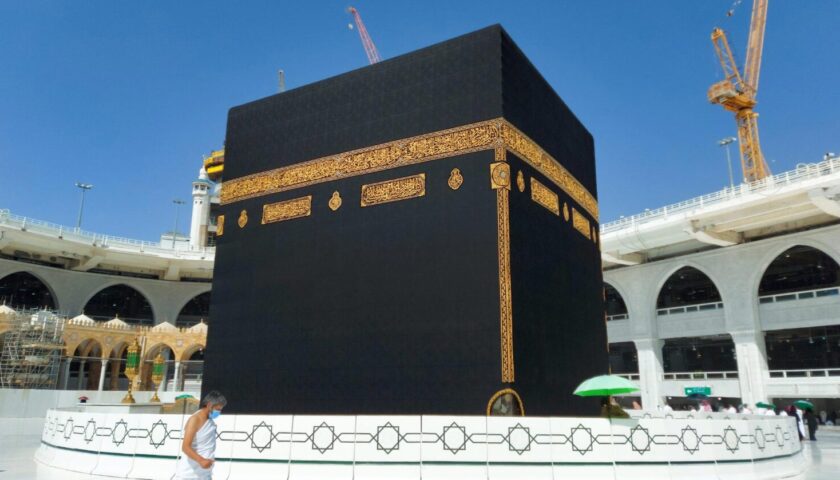Perched atop a lush, wooded hill in the Sintra Mountains of Portugal, Pena Palace stands as one of Europe’s most captivating and colorful architectural marvels. This eclectic and whimsical palace, with its vivid hues and blend of Gothic, Manueline, Moorish, and Renaissance elements, has earned its place as a UNESCO World Heritage Site and one of Portugal’s most visited landmarks. A testament to 19th-century Romanticism, Pena Palace offers a breathtaking journey through history, architecture, and natural beauty.
Historical Background
The story of Pena Palace begins in the Middle Ages when a chapel dedicated to Our Lady of Pena was built on the site. By the 16th century, a monastery was established, which served the Hieronymite monks for centuries. The devastating 1755 Lisbon earthquake reduced the monastery to ruins, but it was King Ferdinand II who, in the mid-19th century, transformed these ruins into the dazzling Pena Palace we see today.
King Ferdinand II, a German prince by birth, married Queen Maria II of Portugal and fell in love with the landscapes of Sintra. In 1838, he acquired the monastery and surrounding lands and set out to create a summer residence fit for royalty. Inspired by the romantic movement, Ferdinand enlisted the talents of the Prussian architect Wilhelm Ludwig von Eschwege, who brought to life the king’s vision of an extravagant and whimsical palace.
Architectural Features
Pena Palace is renowned for its striking and imaginative design. The palace is a synthesis of various architectural styles, reflecting King Ferdinand II’s eclectic tastes and the Romantic era’s fascination with the exotic and the fantastical.
The Facade and Exterior
The palace’s exterior is a riot of color and shapes, with vibrant yellows, deep reds, and cool blues contrasting against the verdant landscape. The facade is adorned with ornate details, including Moorish-style minarets, Renaissance domes, and Gothic towers. The mix of styles creates an almost surreal aesthetic, as if the palace emerged from a fairy-tale dream.
The clock tower, with its distinctive crenellated design, and the ribbed vaulting of the entrance arch, inspired by the Manueline style, are particularly notable. The intricate stone carvings and decorative tiles further enhance the palace’s ornate appearance.
The Triton Gateway
One of the most remarkable features of Pena Palace is the Triton Gateway. This portal is guarded by a mythological figure, part-man, part-fish, representing the allegory of creation. The triton’s muscular form and detailed scales are carved with incredible precision, exemplifying the Romantic fascination with mythology and nature.
The Interior
Inside, Pena Palace is equally enchanting. The rooms are lavishly decorated, showcasing the luxurious lifestyle of the Portuguese royal family. Each room has its own unique character, from the richly adorned Arab Room, with its intricate geometric patterns, to the opulent King’s Chambers, featuring neo-Gothic furnishings.
The grand dining room, with its long banquet table and impressive array of silverware, reflects the royal penchant for grandeur. The walls are adorned with exquisite tapestries and paintings, while the ceilings boast elaborate stucco work. The palace also houses a chapel, retaining elements from the original monastery, including beautiful stained glass windows and a Renaissance altarpiece.
The Gardens
The Pena Palace is set within the expansive and meticulously landscaped Pena Park, which covers over 200 hectares. King Ferdinand II was as passionate about landscaping as he was about architecture, and he transformed the rugged hills surrounding the palace into a verdant paradise.
Exotic Flora
The park is home to a diverse array of exotic plants and trees, collected from around the world. Giant sequoias from North America, ferns from Australia, and ginkgo trees from China coexist with native Portuguese flora, creating a unique botanical garden. The winding paths and hidden grottoes invite exploration, offering stunning views of the palace and the surrounding landscape at every turn.
The Queen’s Fern Garden
One of the most enchanting areas of Pena Park is the Queen’s Fern Garden. This secluded spot, filled with towering tree ferns, creates an almost primeval atmosphere. The delicate fronds of the ferns, combined with the dappled light filtering through the canopy, make this garden a tranquil retreat within the larger park.
Historical and Cultural Significance
Pena Palace is not only an architectural gem but also a symbol of the Romantic era’s ideals. Its creation marked a departure from the classical and rational styles of the preceding centuries, embracing instead the emotional and imaginative qualities that defined the Romantic movement. The palace stands as a testament to King Ferdinand II’s artistic vision and his desire to create a harmonious blend of art and nature.
In 1910, following the establishment of the Portuguese Republic, Pena Palace was designated a national monument and subsequently opened to the public as a museum. Its historical significance and stunning beauty have made it a cherished landmark, attracting visitors from around the world.
Visitor Experience
Visiting Pena Palace is a journey into a fairy-tale world. The palace’s hilltop location provides panoramic views of the surrounding landscape, including the town of Sintra, the Atlantic Ocean, and, on clear days, Lisbon. The vibrant colors and fantastical architecture of the palace make for a visually stunning experience, while the richly decorated interiors offer a glimpse into the opulent lifestyle of the 19th-century Portuguese royalty.
Practical Information
Pena Palace is located within the Sintra-Cascais Natural Park, about 30 kilometers from Lisbon. It is accessible by car, train, or bus, with the train journey from Lisbon taking around 40 minutes. From the town of Sintra, visitors can take a shuttle bus or enjoy a scenic hike up to the palace.
It is advisable to purchase tickets in advance, especially during the peak tourist season, to avoid long lines. The palace and park are open year-round, though opening hours may vary with the season. Guided tours are available, offering detailed insights into the history and architecture of the palace.
Exploring the Grounds
While the palace itself is the main attraction, exploring the surrounding park is a must. The trails and pathways are well-marked, leading visitors through the lush gardens, past serene ponds, and up to various viewpoints. The Chalet of the Countess of Edla, another romantic structure built by King Ferdinand II for his second wife, Elise Hensler, is also located within the park and is worth a visit.
Conclusion
Pena Palace is a jewel in Portugal’s rich cultural heritage. Its vivid colors, eclectic architectural styles, and stunning natural setting make it a unique and unforgettable destination. As a symbol of Romanticism and a testament to King Ferdinand II’s creative vision, the palace continues to enchant visitors, offering a fairy-tale escape into a world of beauty and imagination. For anyone visiting Portugal, a trip to Pena Palace in Sintra is a journey into the heart of 19th-century Romanticism and a celebration of the harmonious blend of nature and art.



